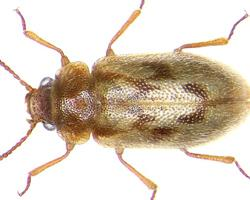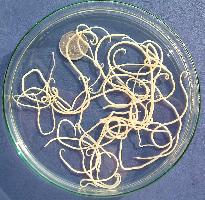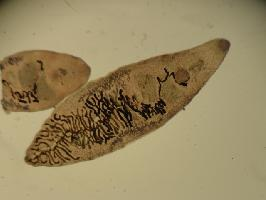
Súlyok és méretek
| Hossz | 5-tól 10-ig cm |
|---|
Állatleírás
The Chinese mitten crab, scientifically known as Eriocheir sinensis, is a unique and fascinating species of crab that has attracted attention both for its distinctive physical characteristics and its significant impact on ecosystems and economies where it is introduced. Originating from coastal regions and estuaries in East Asia, particularly China and Korea, this species has spread to various parts of the world, including Europe and North America, often being labeled as an invasive species outside its native range.One of the most striking features of the Chinese mitten crab is its appearance. Adult crabs can reach a carapace width of up to 10 centimeters (about 4 inches) and have a notable brownish coloration. However, what sets them apart visually are their pincers. The claws are covered in dense patches of setae, resembling furry mittens, which is how the crab got its common name. These "mittens" are more pronounced in males, which also tend to have larger claws than females. The crab's body is somewhat rounded, with a smooth carapace, and it possesses eight legs plus the two clawed pincers, all of which enable it to move with agility both in water and on land.
The life cycle of the Chinese mitten crab is complex and involves migration between saltwater and freshwater. They are catadromous, meaning they live in fresh or brackish water but migrate to saltwater environments to breed. The females can carry up to two million eggs, which they release in coastal areas. The larvae go through several developmental stages in the ocean before migrating upstream into rivers. This journey can be remarkably long, with some crabs traveling hundreds of kilometers. They typically prefer soft-bottomed, vegetated habitats and can burrow into riverbanks, which can lead to significant erosion and damage to flood protection structures.
In their native habitat, Chinese mitten crabs are considered a delicacy and are fished commercially. However, in regions where they are invasive, they pose substantial challenges. Their burrowing can weaken flood defenses and cause damage to fishing gear and infrastructure. Moreover, they can impact local ecosystems by preying on native species and competing for resources, potentially leading to declines in biodiversity.
The spread of the Chinese mitten crab has been facilitated by human activities, notably through ballast water discharge from ships and potentially through the aquatic pet and live food trades. Efforts to manage and control their populations in non-native regions include trapping, physical barriers to prevent upstream migration, and public awareness campaigns to prevent their intentional release.
Despite the challenges they present, Chinese mitten crabs remain a subject of scientific interest, particularly regarding their adaptability and the implications of their migration and invasion patterns on local ecosystems. Their unique lifecycle and the ability to thrive in diverse environments make them a notable example of the complexities involved in managing invasive species and preserving biodiversity.
Hasonló állatok
Új állatfotók
Top 10 állat
- Dolphin gull (Leucophaeus scoresbii)
- Diana monkey (Cercopithecus diana)
- Moustached guenon (Cercopithecus cephus)
- Galápagos tortoise (Geochelone nigra complex)
- Stone loach (Barbatula barbatula)
- Japanese macaque (Macaca fuscata)
- Greek tortoise (Testudo graeca)
- Russian tortoise (Testudo horsfieldii)
- Common flying dragon (Draco volans)
- Galápagos penguin (Spheniscus mendiculus)


